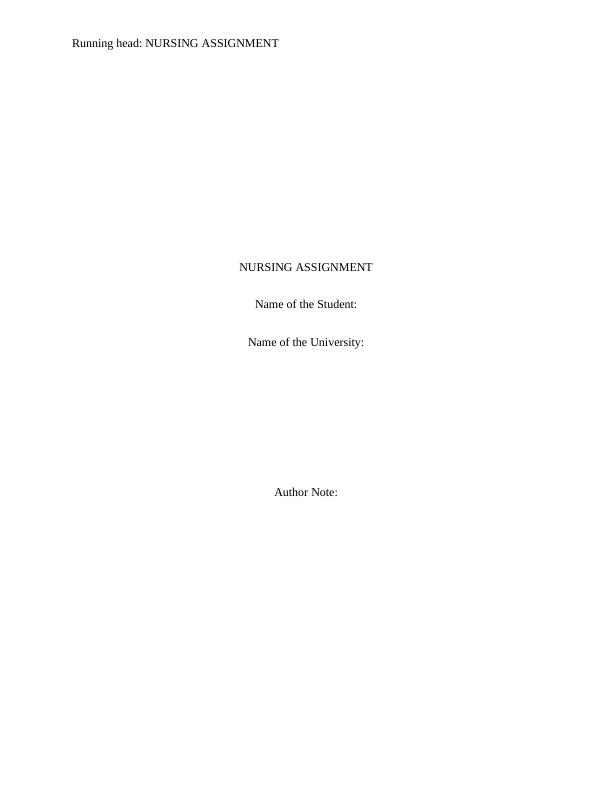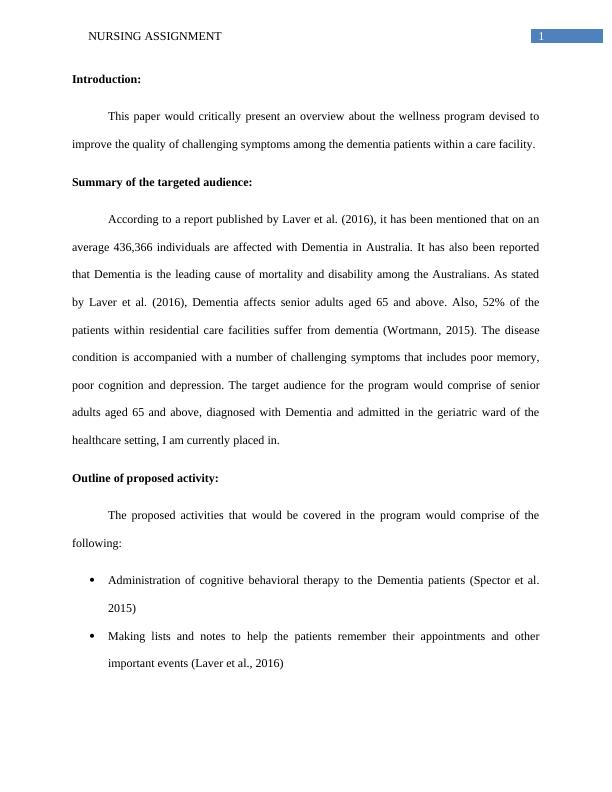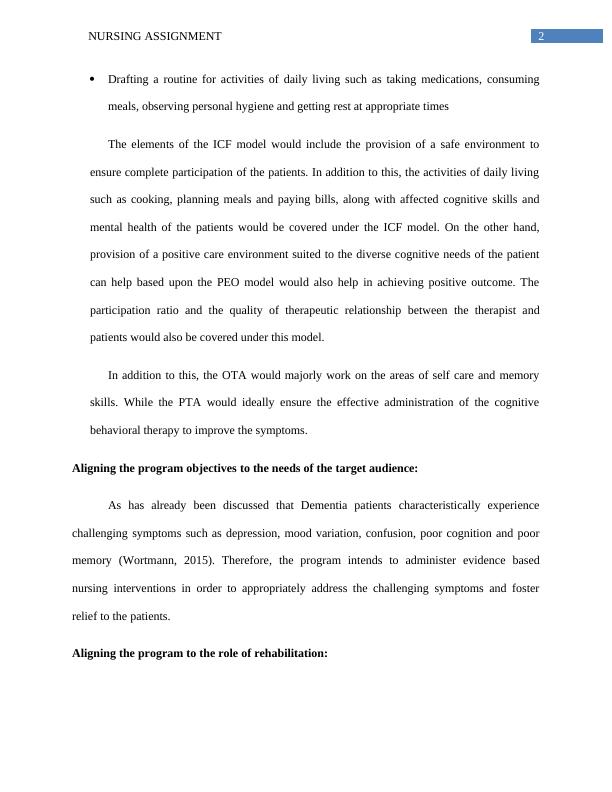Wellness Program for Dementia Patients
Added on 2023-04-12
6 Pages919 Words184 Views
End of preview
Want to access all the pages? Upload your documents or become a member.
Best Practices for Imparting Holistic Care to Dementia Patients
|8
|2126
|80
Treatment of People with Dementia: Involuntary Movement
|5
|1232
|296
Role of Music Therapy in Dementia Patients
|15
|3639
|83
Assignment on the Nursing 2022
|6
|948
|19
Understanding Dementia in Senior Adults: Challenges and Best Practices in Nursing Care
|10
|2552
|247
Evidence Based Practice for Dementia
|6
|1362
|94



